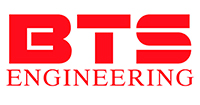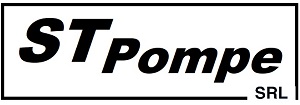News Prom-nasos
February 21, 2025
A brief overview of pumping equipment driven by a PTO from the Turkish manufacturer Ekler
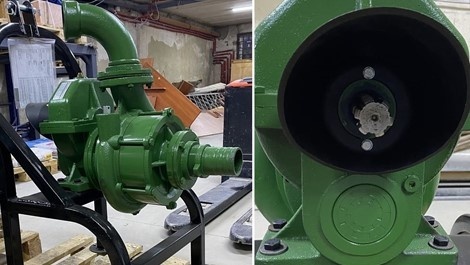
The Turkish manufacturer Ekler presents a range of small and medium power pumps for drip and sprinkler irrigation, filling containers, creating water reserves for water supply, firefighting, and applying liquid mineral fertilizers.
These are cantilever pumps with a gearbox (multiplicator), which increases the rotational speed of the impeller.
The pump is mounted on the three-point hitch of the tractor, and the drive is transmitted via the power take-off shaft.
Also interesting might be models with hydraulic drive Hydro-2 and Hydro-3.
Due to their compactness, they can be mounted on the tractor or vehicle. They are most often used for unloading and loading tankers.
Another pump model that will be an indispensable helper for the housing and communal sector, repair teams performing repair and emergency work on pipeline break sections. For pumping dirty water or sewage, check out the MTZ-UK 50T pump.
This pump, unlike the models described above, has a pre-fill chamber, which eliminates the need to pre-fill the working chamber. It can suction liquid from a depth of 6-7 meters.
A separate group of pumps from Ekler is the PTO series pumps, designed for road transport.
Such pumps can be widely used in specialized automotive equipment working in construction, agriculture, where electric pumps cannot be used. When choosing a pump, attention should be paid to the direction of rotation of the power take-off shaft – left or right. The drive of the pump impeller is provided by a compact gear transmission.
Our website also features other brands that have a power take-off drive, such as Ferroni, ROVATTI, Veneroni .
You can always contact our specialists to choose the best option.
February 14, 2025
EMSE gear pumps with external gearing
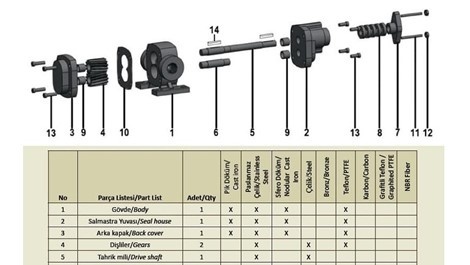
Gear pumps are designed for pumping a wide range of liquids with high viscosity.
EMSE gear pumps of the EDP series (with external gearing) can pump fuel oil, caustic soda, oil, glue, mineral oil, gel, grease, chocolate, soap raw materials, glucose, quaternary esters, glycerin, rubber, wax, honey, molasses, oil and much more.
The advantage of external gear meshing is the simplicity of construction and repair.
The EMSE pumps of the EDP series are also equipped with helical gears, which significantly reduces operating noise and radial load on the shaft.
An important feature is the ability to use both gland packing made of various materials and mechanical seals.
Mechanical seal of the EDP pump
These pumps can be supplied without a motor - with a free shaft end - or as complete units ready for operation.
Choosing a gear pump for pumping a certain type of product is a rather complicated task for those who use or plan to use this type of pump for the first time.
The same pump unit can be equipped with motors of different power and speeds.
The material of the housing and gears can also vary depending on the customer's wishes: it can be cast iron, structural steel, stainless steel AISI 304, AISI 316, Teflon.
The operating temperature range is from -20 to +180 °C.
Rotation speed from 200 to 1500 rpm.
Our experts will help you choose the best option in terms of parameters and price! Don't hesitate to contact us!
January 24, 2025
Peristaltic pump B3-V 0103 90-260V Santoprene

At first glance, the peristaltic pump B3-V 0103 90-260V Santoprene has a simple structure, the main elements of which are a hose and rollers attached to a shaft, with the help of which liquid is pumped through the hose. Due to the fact that the rollers and shaft are not in contact with the liquid, it allows it to pump aggressive solutions. It is used for pumping: acid, liquid powders, coagulant, solutions, alkali, antiseptic and various chemicals. The capacity is manually adjustable from 10-100%. The main advantage of the pump is its reliability, compactness, and non-contact pumping, which makes it cost-effective to maintain.
December 13, 2024
Pumps for swimming pools
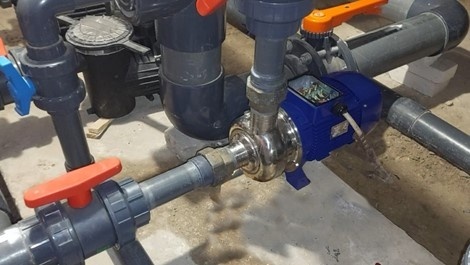
Swimming pool pumps are conventional centrifugal pumps. The only difference is that they usually have an integrated coarse filter (see Fig. 1), the so-called ‘hair filter’, in their housing.
In general, the prefix ‘pumps for water supply, heating, well or swimming pool’ is determined by the system or place where the pump will be used. Accordingly, the same pump can be used in different systems. That is, no one prohibits the use of a water supply pump in a pool circulation system, as long as it meets the required parameters.
Pumps used in swimming pool filtration and circulation systems must provide sufficient water supply, which depends on the volume of the pool. The pressure created by the pump is usually in the range of 1 to 2 atm. This pressure is quite sufficient both for circulation and to overcome the resistance of the filtering system (sand filters).
Since the water in the pool is disinfected, it contains a small concentration of sodium hypochlorite, so the material of the flow part should be made of plastic or stainless steel.
The absence of an integrated filter can be easily compensated for by using a conventional coarse filter in the suction line. When using pumps with an open impeller (see Fig. 2), a filter can be dispensed with, as this type of impeller does not clog, and impurities and dirt are further stopped by the sand filter and do not re-enter the pool.
Our specialists have successfully replaced a classic plastic pool pump with a centrifugal stainless steel pump.
Since the pump to be replaced had failed due to a motor winding burnout, a protection and control panel was also installed to control the new pump and the protection parameters were adjusted accordingly.
Pump that has failed
New pump
December 5, 2024
Problems when starting a self-priming pump and solutions
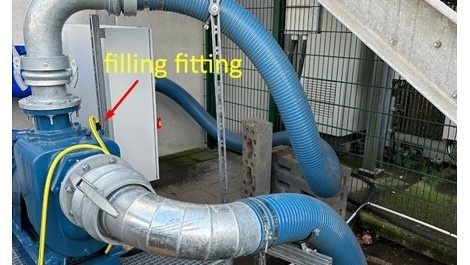
Self-priming pumps with a pre-filling chamber can operate without installing a check valve at the end of the pipe. These pumping units are convenient for unloading tanks with oil products, diesel fuel, petrol, oil and other liquids.
The ability to suck in liquid is ensured by the built-in check valve and the design of the pump casing, which stores a certain level of liquid to start the pump. However, for the first start, there still needs to be liquid in the working chamber, so you will have to fill it up the first time. For this purpose, a filler connection is provided on the casing (see Fig. 1 item 4, Fig. 2).
The table below shows typical faults that may occur during operation of a centrifugal self-priming pump and how to resolve them.
November 29, 2024
Energy-saving pumps with frequency converter
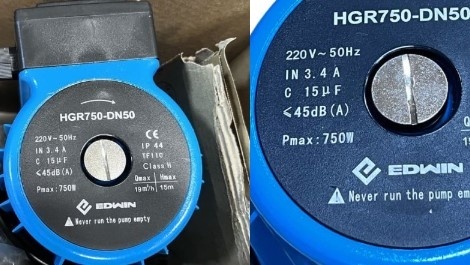
Pumps are indispensable devices in many industries, from heating systems to industrial equipment. Choosing the right pump can significantly improve system efficiency and reduce energy costs. Let's take a look at the features and benefits of these pumps.
Energy-saving pumps are used to optimise energy consumption. They are designed to reduce energy consumption while performing their functions. This is achieved through the use of innovative technologies, such as integrated control systems that adapt the pump to changing conditions. For example, circulation pumps with a frequency converter allow you to adjust the rotor speed, which makes it possible to operate only within the required capacity. This is an ideal solution for heating and water supply systems.
The use of a frequency converter reduces energy consumption, ensures a steady flow and avoids overloading the system. The variable pump speed allows the pump to be precisely adjusted to the needs of the system, which is important for energy conservation.
You can find out more about the circulation pump with frequency converter here.
November 25, 2024
Types of wind turbines

Tulip and H-type wind turbines have different designs and operating principles:
Tulip wind turbines
Design: Vertical wind turbines with a cylindrical shape and curved blades resembling tulip petals.
Advantages:
Effectively operate at low wind speeds, making them ideal for urban and suburban areas.
Reduce noise and vibration due to their shape.
Require less space for installation.
Less hazardous to birds and bats.
Easier to maintain and repair.
H-type wind turbines
Design: Horizontal wind turbines with blades arranged on a horizontal axis.
Advantages:
High efficiency at high wind speeds.
Often used for large wind farms due to their power.
Can generate more energy in stable wind conditions.
Both types have their advantages and disadvantages, and the choice depends on specific conditions and needs.
In addition to the tulip and H-type wind turbines, there are several other main types of wind turbines:
Horizontal wind turbines (HAWT)
Design: The blades are arranged on a horizontal axis.
Advantages:
High efficiency in stable wind conditions.
Often used in large wind farms, both on land and at sea.
Vertical Wind Turbines (VAWT)
Design: Blades are arranged on a vertical axis.
Advantages:
Can operate in variable wind directions.
Easier to maintain as generator and transmission are located closer to the ground.
Other types of wind turbines
Savonius: Vertical wind turbines with two or more curved blades that resemble a drum shape. Used for small installations.
Darrieus: Vertical wind turbines with “C” or “H” shaped blades. They are effective at high wind speeds.
Bladeless wind turbines: Use vibrations to generate power, which reduces noise and vibration.
Each type has its own unique characteristics and is suitable for different conditions and needs.
For a detailed overview of the principle of operation and the choice of the desired model, you can go to the website.
November 22, 2024
Iron-phosphate batteries LiFePO4/LFP
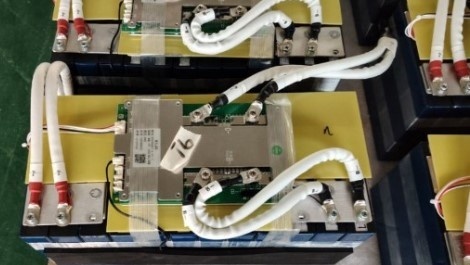
Iron-phosphate batteries, also known as lithium-iron-phosphate batteries (LiFePO4 or LFP) , are a type of lithium-ion battery that has gained popularity due to their safety, durability and stable performance. These batteries differ from other lithium-ion batteries, such as lithium-cobalt-oxide (LiCoO2) batteries, due to their chemical structure, which gives them certain advantages and disadvantages.
Main characteristics of LFP batteries
Chemical composition: Iron phosphate (LiFePO4) is used as the cathode material, while the anode is traditionally made of graphite. The iron phosphate structure provides high resistance to thermal changes, which increases the overall safety of the battery.
Safety: Due to their stable chemical structure, LFP batteries are less prone to overheating and are not prone to thermal runaway, which makes them less vulnerable to fire. This is a significant advantage over other lithium-ion batteries, which can be prone to spontaneous combustion.
Long service life: One of the main advantages is a long cycle life - LFP batteries can withstand 2000-4000 charge-discharge cycles, while retaining most of their capacity. Some high-end models can even exceed 5,000 cycles.
High discharge tolerance: These batteries can be discharged to lower voltage levels without significantly affecting their lifespan. This makes them suitable for applications that require regular deep discharges.
Environmentally friendly: Unlike batteries containing cobalt or nickel, the production of LFP batteries has a lower environmental impact, as iron and phosphate are less toxic and easier to recycle.
Areas of application
LFP batteries are used in a variety of applications, including:
Electric Vehicles: Due to their safety and long cycle life, many electric vehicles use LFP batteries, especially models aimed at the mass market.
Energy Storage Systems: Due to their deep discharge resistance and long life, they are ideal for home and commercial energy storage systems.
Portable Devices and Equipment: They are used in a variety of portable devices and electrical equipment where safety and durability are critical factors.
To learn more about how it works and how to choose the right model, visit the website.
September 20, 2024
Buying a generator
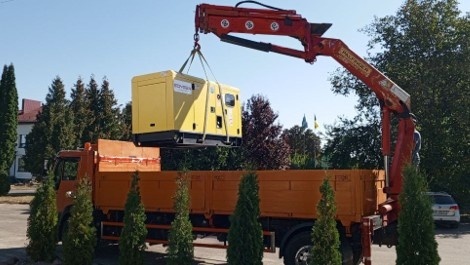
The modern world requires a reliable power supply, especially for businesses and private households. Installing a generator is a smart solution to ensure uninterrupted operation of equipment, lighting and other critical needs.
The photo shows the delivery of a new generator using a truck crane. This is an important part of the process, as it ensures the safe movement of heavy equipment, which, in this case, has a yellow casing and markings SOYGEN .
Advantages of installing a generator:
Autonomy: Provides uninterrupted power supply during power outages.
Reliability: High quality generators, such as the one shown in the photo, can operate in a variety of conditions, providing stable power.
Savings: The use of a generator can reduce electricity costs in conditions of unstable supply or in case of accidents.
Before to buy a generator , you should determine its purpose and required power, as well as pay attention to the technical characteristics and quality of the equipment. The installation should be entrusted to specialists who will be able to choose the right place and make all the necessary settings.
By choosing a generator, you invest in your own comfort and safety!
August 30, 2024
Installation of a wind turbine
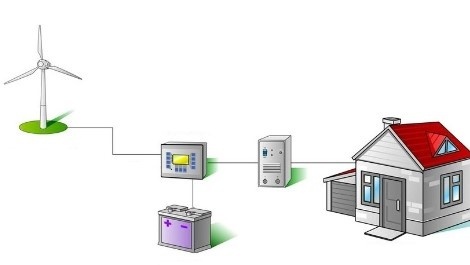
Choosing a wind turbine
The choice of wind turbine depends on your electricity needs. There are different types of wind turbines:
Vertical wind turbines : Suitable for private homes and capable of producing from several hundred watts to several kilowatts of electricity.
Horizontal wind turbines : Used for small commercial enterprises and can produce from a few kilowatts to several tens of kilowatts.
Preparation of Tools and Equipment
To install a wind turbine, you will need the following tools and materials:
Foundation bolts;
Crane or hoist ;
Electrical cables ;
Inverter (for converting alternating current to direct current);
Protective equipment (helmets, gloves, etc.).
Installation of the Foundation
The foundation is an important part of the wind turbine construction. It must be strong enough to support the weight of the generator and withstand strong winds.
Dig a foundation hole according to the dimensions and requirements of your wind turbine.
Install the rebar and pour concrete to create a strong foundation.
Fix the foundation bolts in the concrete until it hardens.
Installation of the Pillar
Once the foundation has hardened, the installation of the pole can begin.
Use a crane or hoist to lift the pole and place it on the foundation.
Fix the post with foundation bolts and check its verticality.
Installation of a wind turbine
The next step is to install the wind turbine itself on the pole.
Lift the wind generator with the crane and attach it to the top of the pole.
Connect the electrical cables from the generator to the inverter and the energy storage system (battery).
Connect and configure
After the generator is physically installed, it must be connected to the electrical system.
Connect the inverter to the generator and to your power grid.
Adjust the charge controller for optimal operation of batteries .
Check all connections and make sure they are secure.
Testing and Launch
After the installation is complete, test the system:
Check the operation of the wind generator at different wind speeds.
Ensure that electricity is generated and delivered to your grid or storage system.
Adjust settings for optimal performance.
Conclusion
Installing a wind turbine is a complex but important process that will allow you to harness renewable energy to power your home or business. If you follow all the steps correctly, you will be able to ensure stable and reliable operation of your system. If you encounter any difficulties, it is recommended that you contact a professional to install and configure your wind turbine.
















